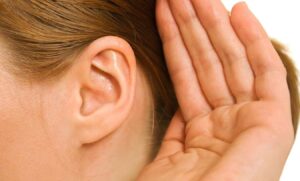Hearing Protectors

Why is Hearing Protection Device (HPD) selection so important?
A hearing protector serves no purpose unless it is worn.
- Employees generally will not wear devices that are uncomfortable. To comply with safety policy, individuals may modify HPD’s for greater comfort or wear them “just for show”, either of which will greatly compromise or nullify effectiveness.
- Hearing protectors should be convenient and quick to put on or they are unlikely to be worn, particularly for short, intermittent exposures. Individual reports of being unable to hear well when wearing HPD’s should not be disregarded.
- An employee’s overall safety and job performance frequently requires the ability to hear critical communication and warning signals. While some new wearers will require a brief adjustment to communicating with the devices, there are situations in which a different protector will be needed. Employees with hearing loss may need special, filtered plugs or electronic earmuffs. Individuals working in environments of 80 to 85 dBA may be overprotected by high Noise Reduction Rating (NRR) devices, compromising their ability to hear potentially critical alerts and warnings.
Hearing Protection Devices (HPD’s)
There are several styles of hearing protection devices available. The best choice is the one that fits properly, is appropriate for noise and work environment, and is comfortable and consistently worn by the individual. It is a requirement that employees receive individual fitting instruction including assessment of their fit.
What type of hearing protection devices must an employer provide?
Employers are required to provide a minimum of two types of hearing protectors to noise exposed workers. It might be advantageous to offer additional styles. What is appropriate for one worker or setting is not always appropriate for another. The HPD comparison chart summarizes the features and applications of each hearing protector type.
| Device | Features | Disadvantages | Applications |
|---|---|---|---|
Foam Plugs | – High NRR – Comfortable to most – Compatible with other safety gear | – Requires more time to fit – More difficult to insert – Requires good hygiene | – Higher noise levels – Long term, constant noise – Use with other safety gear |
Pre-Formed Plugs | – Semi-reusable – Quicker, easier insertion – Little handling required – Available with filtering – Lower NRR | – Uncomfortable to some for long wear | – Hygiene Concerns – Dexterity Problems – Intermittent noise – Lower noise environments (where over attenuation is a concern) |
Branded/Semi-Insert | – Convenient – Lightweight – Lower NRR | – Uncomfortable to some | – Intermittent exposure – Dexterity problems – Lower noise environments (where over attenuation is a concern) |
Ear Muffs | – Convenient – Variety of NRRs Electronic models available for enhanced communication and special applications | – Warm in summer – Uncomfortable to some – Incompatible with some safety gear | – Intermittent exposure – Hygiene Concerns – Dexterity |
Custom Devices | – Easy insertion – Customized, secure fit – Variety of NRRs – Available with filters – Good for up to 5 years | – Higher initial cost | – Hygiene concerns – Dexterity problems – Communication concerns – Medical issues |
How do I know if the hearing protector is fitting properly?
Each employee within the hearing conservation program needs an individual assessment of hearing protector fit. Properly fitted earplugs create an airtight seal in the ear canal. Once inserted, a gentle tug on the plug will be met with resistance and there should be an evident break in the seal upon removal. Earmuffs should be in good condition since proper fit requires adequate headband tension and cushion integrity. The cushion seal around the ear should be traced carefully to ensure there are no gaps.
What should I know about the Noise Reduction Rating (NRR)?
The Noise Reduction Rating (NRR) system was developed to provide consumers with an estimate of how many decibels of noise reduction can be achieved by any given hearing protector. The ratings are established as a result of measurements performed under controlled laboratory conditions. The “real-life” protection provided by hearing protectors is often significantly less than the ideal or measured value. It is recommended that the NRR be de-rated by one-half to estimate actual noise reduction in workplace conditions. Example: Joe’s noise exposure is 94 dBA and he wears earplugs with a manufacturer NRR of 26. His estimated noise exposure when using the plugs is 81 dBA (94–13=81).
If desired, the actual noise reduction of a hearing protector as worn by the employee can be obtained using a fit verification system, such as the FitCheck system.
How much noise reduction should the hearing protector provide?
Ideally, hearing protectors should provide enough noise reduction to bring employees’ noise exposures to safe levels without significantly compromising their ability to hear important communication and warning signals. The chart below provides a guideline.
| Adjusted Employee Noise Exposure Level (as a result of HPD Use) | Outcome |
|---|---|
| Greater Than 85 | Insufficient |
| 80-85 | Acceptable |
| 75-80 | Ideal |
| 70-75 | Acceptable |
| Less Than 70 | Risk Of Overprotection |
How is hearing protection level affected when HPD’s are removed for short periods of the noise exposure?
In order to get maximum benefit from a hearing protector, it should be worn at all times during noise exposure. Even a brief removal of the HPD will result in a substantial reduction in protection.

